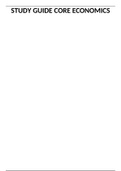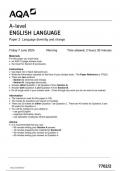Samenvatting
Study Guide Core Economics 2019 from the book the Economy, samenvatting, summary
Study Guide Core Economics 2019 from the book the Economy for EUC students. With this summary, I got a 100 for my partial and a 94.9 for my final. Once again, Core Economics requires a lot of readings, and with this study guide that is no longer necessary. With a clear overview of the terms and uni...
[Meer zien]












